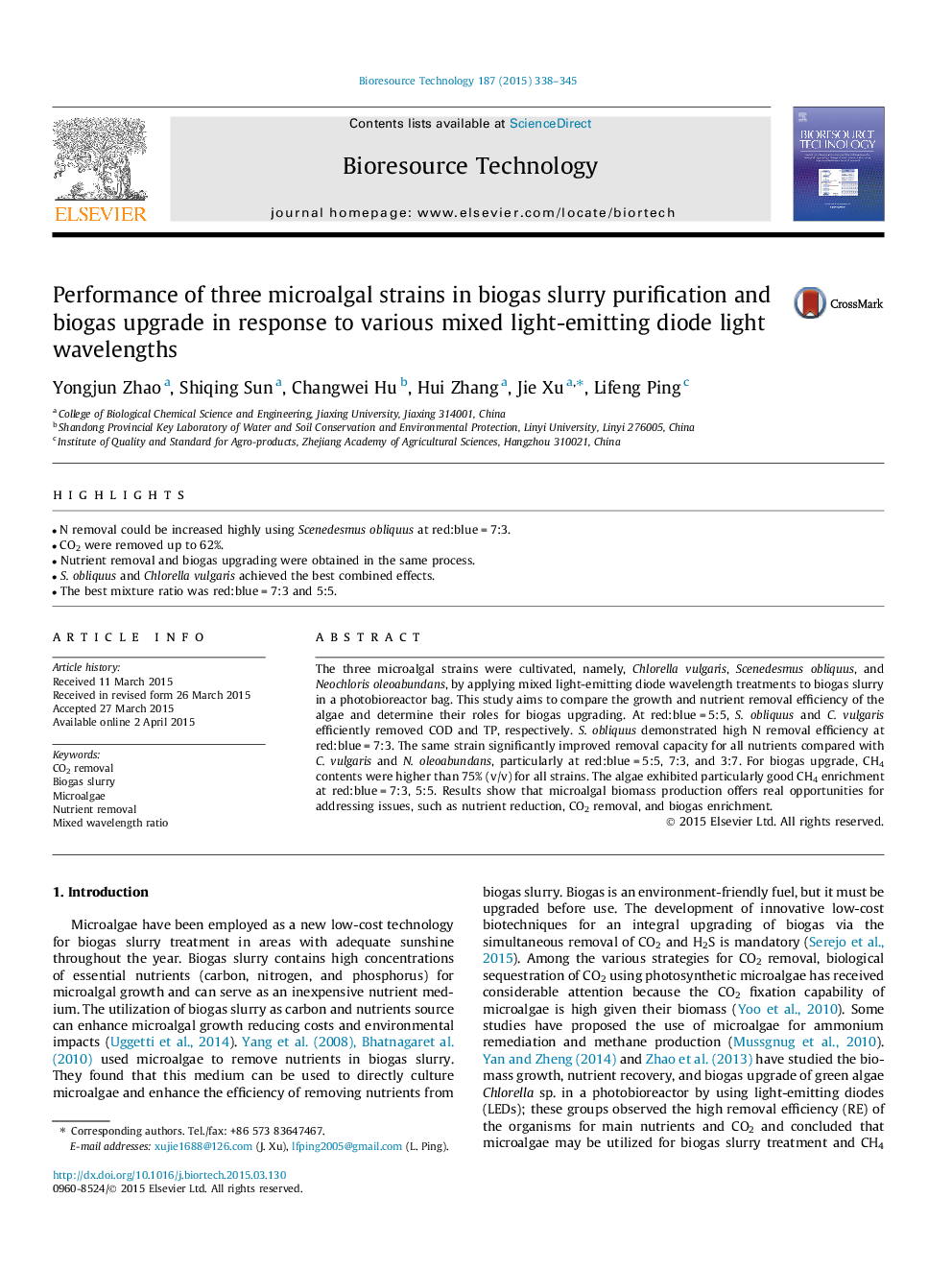| Article ID | Journal | Published Year | Pages | File Type |
|---|---|---|---|---|
| 7074992 | Bioresource Technology | 2015 | 8 Pages |
Abstract
The three microalgal strains were cultivated, namely, Chlorella vulgaris, Scenedesmus obliquus, and Neochloris oleoabundans, by applying mixed light-emitting diode wavelength treatments to biogas slurry in a photobioreactor bag. This study aims to compare the growth and nutrient removal efficiency of the algae and determine their roles for biogas upgrading. At red:blue = 5:5, S. obliquus and C. vulgaris efficiently removed COD and TP, respectively. S. obliquus demonstrated high N removal efficiency at red:blue = 7:3. The same strain significantly improved removal capacity for all nutrients compared with C. vulgaris and N. oleoabundans, particularly at red:blue = 5:5, 7:3, and 3:7. For biogas upgrade, CH4 contents were higher than 75% (v/v) for all strains. The algae exhibited particularly good CH4 enrichment at red:blue = 7:3, 5:5. Results show that microalgal biomass production offers real opportunities for addressing issues, such as nutrient reduction, CO2 removal, and biogas enrichment.
Related Topics
Physical Sciences and Engineering
Chemical Engineering
Process Chemistry and Technology
Authors
Yongjun Zhao, Shiqing Sun, Changwei Hu, Hui Zhang, Jie Xu, Lifeng Ping,
